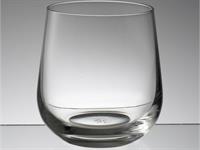
PUMPA - SMART LEARNING
எங்கள் ஆசிரியர்களுடன் 1-ஆன்-1 ஆலோசனை நேரத்தைப் பெறுங்கள். டாப்பர் ஆவதற்கு நாங்கள் பயிற்சி அளிப்போம்
Book Free DemoThe volume of the solid formed by combining two more solids is obtained by simply calculating the volume of the individual solids and adding them.
Suppose a solid is in the form of a cone surmounted on a hemisphere, then its volume is given by the sum of the volume of the cone and the hemisphere.
Let us discuss an example to understand the concept better.
Example:
The interior of the glass is in the form of a cylinder surmounted on a hemisphere has a uniform radius of 4 cm and the height of the cylindrical part is 7 cm. Find the capacity of the glass.

Solution:
The volume of the glass = Volume of the hemisphere + Volume of the cylinder
Volume of the glass = \frac{2}{3} \pi r^3 + \pi r^2 h
= \left[\frac{2}{3} \times \frac{22}{7} \times (4)^3\right] + \left[\frac{22}{7} \times (4^2) \times 7 \right]
= \left[\frac{2}{3} \times \frac{22}{7} \times 64\right] + \left[\frac{22}{7} \times 16 \times 7 \right]
= 134.1 + 352
= 486.1 cm^3
Therefore, the capacity of the glass is 486.1 cm^3.